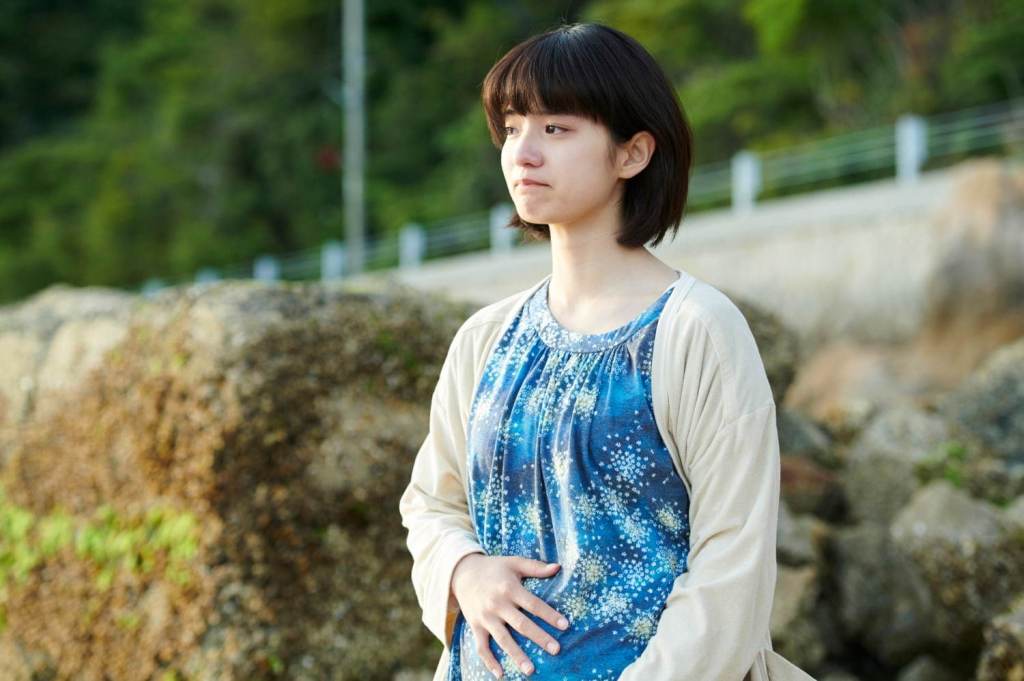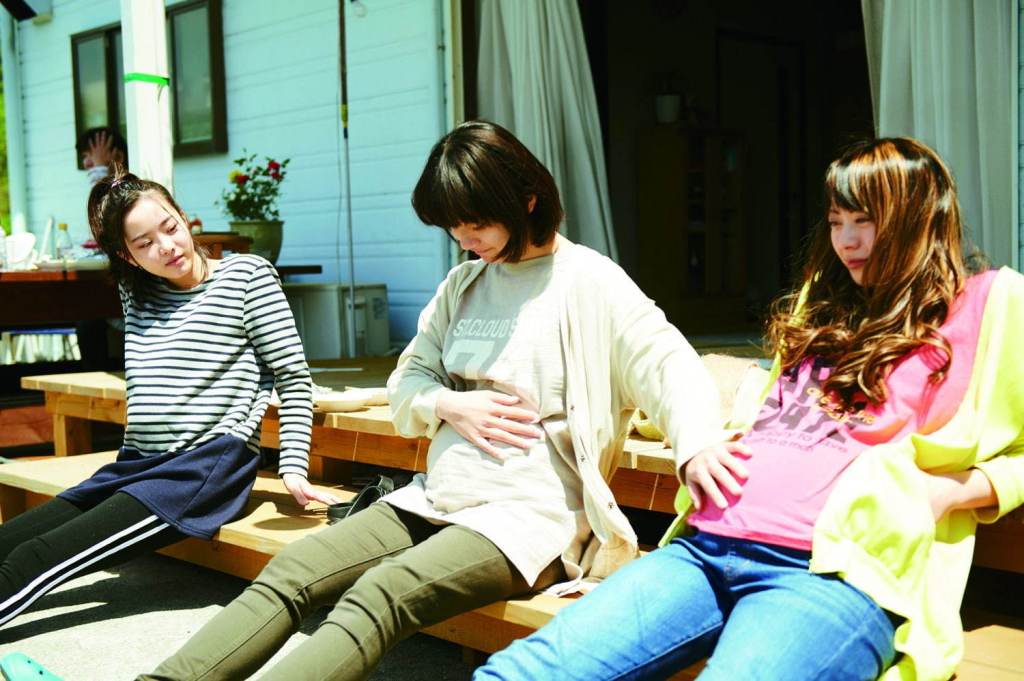Introduction
In conversations with people who love cinema but are not well-versed in Japanese cinema, the names of two Japanese directors easily find their way into the conversation: Hiro-kazu Kore-eda and Naomi Kawase.
With True Mothers, Naomi Kawase, known from films like Still the Water (2014), Sweet Bean (2015), Radiance (2017), offers, by exploring the notion of motherhood, a complement to Kore-eda’s investigation of the notion of fatherhood – an analysis of Kore-eda’s investigation of fatherhood can be read here.
Review
After many attempts to try to conceive a child, Kiyokazu Kurihara (Arata Iura) and Satoko (Hiromi Nagasaku) finally decide to accept the impossibility of achieve their parental dream. By mere chance, they learn about plenary adoption. Not that much later, they attend a meeting at the adoption agency and decide, almost on the spot, to adopt a child.
Six years later, the couple, now living happily with their son Asato (Reo Sato), starts receiving silent calls. One day, during such call, a female person suddenly starts speaking. She introduces herself as Hikari Katakura (Aju Makita), Asato’s birth mother. She wants her child back or, if they do not want to comply, pay her. They decide to meet her.
True Mothers is a narrative that attempts – and succeeds – to introduce the spectator to one of the elements essential in the birth of the female subject as mother. The problem is first analyzed in Kiyokazu and Satoko’s trajectory and then, in the second part of the film, re-analyzed in Hikari’s tragic personal trajectory.
In Kiyokazu and Satoko’s narrative, motherhood is introduced as problem. Kiyokazu and his wife are, one day, confronted with the fact that they cannot, via the real or via nature’s way (i.e. through birth), realize a position that would allow them to assume the signifier mother and father (Narra-note 1). All their attempts to force such position, a position grounded in the Real of birth and the symbolic permission it grants to bear the parental signifier, fail.
By mere accident, Kiyokazu and Satoko stumble on the possibility of being mother and father through adoption. They stumble, in other words, upon the possibility to attain the position that allows them to assume the signifier mother and father through the symbolic device of adoption and via the attainment, via the law, of the parental rights (Culture-note 1). What their search for a child reveals is that, even though one needs the symbolic permission to bear the parental signifier, the true becoming of a parent resides in the subjective assumption of the signifier mother or father as such.
When Hikari calls the Kurihara’s, she demands her child back solely on the ground of having given birth to him. She attempts to use her real motherhood (i.e. relation by blood) to attain the right to be Asato’s mother in the imaginary – in the field where meaning is produced between subjects, but, as it is, she has no symbolic permission – she gave up her parental rights – to be Asato’s mother in the imaginary. But does she really want to re-attain Asato? Does the ease by which she equates the child with money – as if they are interchangeable – not imply that something else it as stake? Does this equation not suggest that she has not assumed the parental signifier as much as Satoko has? At the meeting, things get even stranger, as Kiyokazu and Satoko get the impression that the woman before them is not really Hikari. But, if she is not Hikari, who is she and what is her purpose (Narra-note 2 (major spoiler))?
True Mothers also explores Hikari’s past, an exploration that is not only important to solve the riddle of the person who sits before the Kurihara’s, but also instrumental in evoking the Kawase’s message. Does this exploration not ultimately show that the subjective assumption of the signifier mother already takes places before the birth of the child as such, that the assumption of the signifier mother happens before the real event of giving birth and the inscription of the child in the symbolic (i.e. the family register of his mother)? In other words, is the ultimate message of True Mothers not that what makes a female subject a real mother is not the real or the symbolic dimension, but the subjective assumption of the signifier mother and subjectification of the meaning (e.g. the expectations and so on) this signifier is given by the societal Other.
In the exploration of Hikari’s past, Kawase also highlights, albeit in a subtle and indirect way, the taboo that still rests on child pregnancy in Japanese society. Hikari’s family does everything to cover up her pregnancy – forcing her, irrespective of her own subjective desire, to give up her child for adoption – and the family of Takumi Aso (Taketo Tanaka), her boyfriend, forces him to break up with her to ensure his changes in the future. In this exploration she also touches upon the two following truths: the fact that the only true victims of the societal reign of phallic sexual enjoyment are the (often-exploited) female subjects and that the societal and subjective burden of having been pregnant is, first and foremost, a burden women have to carry alone (Narra-note 3).
Nevertheless, the most disturbing element in Hikari’s past is the very way Hikari’s mother treats her; she refuses to take her, as desiring subject, seriously (Narra-note 4). Hikari is forced, against her own desire, a desire she is not even allowed to vocalize, to pursue the path her mother has set out for her, i.e. to pass the entrance exams and enter the same high school as her sister. The radical refusal of Hikari’s subjectivity is the biggest sin of her mother.
What stands out in the composition of True Mothers is its gentle dynamism, the way Kawase gives her composition a pleasing and enticing flow by utilizing camera-movement, i.e. spatial movement, tracking movement. Of course, Kawase also uses static and semi-static moments in her composition, in most cases, to emphasize the facial expressions and body-language of the character in focus. If True Mothers succeeds in being a narrative driven by natural and genuine interactions, it is only because the reliance on static moments, by focusing on the exquisite performances of Hiromi Nagasaku, Reo Sato, Aju Makita, and Arata Iura, allows said performances to captivate and touch the spectator. The drama of True Mothers, while supported by the evocative musical accompaniment, is first and foremost driven by the performances as such.
Other elements that stand out in Kawase’s composition are her reliance on shots of nature and her beautiful use of lighting. True Mothers is, as a matter of fact, full of beautiful and often mesmerizing shots of nature (e.g. landscapes, birds flying in the air, wind rustling the leaves of a tree, … etc.). These shots do not only offer beautiful and peaceful intermezzo’s but also echo, in a rather subtle way, the real dimension of motherhood – the fact that motherhood is, in most cases, grounded in the real act of giving birth.
Yet – and this is important – Kawase contrasts these shots of nature with shots that evoke societal functioning (e.g. the shots framing the construction site, the city-skyline, … etc.). While these shots are less mesmerizing than the rustic shots of nature, they do not fail to echo the symbolic dimension of motherhood – the fact that motherhood only truly begins once one has assumed the signifier mother and subjectified its attached meaning.
Naomi Kawase’s True Mothers offers a beautiful and emotionally rich meditation on the complex notion of motherhood, underlining, in a touching way, that the first essential step in becoming mother is the subjective assumption of the signifier mother and subjectification of the signifier’s signification. What turns Kawase’s latest in such a touching experience is not her beautiful cinematographical composition as such (i.e. the exquisite marriage between the thoughtful visuals and the evocative musical accompaniment), but the pitch-perfect performances by the cast that ensure that all emotions on display feel genuine.
Notes
Narra-note 1: It is, to be more precise, due to a problem with Kiyokazu’s sperm that the couple is unable to conceive a child. That this inability affects Kiyokazu greatly should not surprise us, as it confronts Kiyokazu with a certain phallic inadequacy. Kiyokazu, if he perceives himself through the eye of his Other – i.e. how he thinks other people will see him, can only see his phallic failure.
Narra-note 2: The end of the narrative subtly implies that, while he symbolically nominated Satoko as his mother, he might, by Satoko’s timely intervention, become able to nominate his birthmother Hikari as a secondary true mother as well.
Narra-note 3: The women who give their child up for adoption are, generally, women who have no-one to rely on and no-one to support them. Moreover, they are forced to carry the subjective burden of having given up the child they birthed.
Hikari, too, lacks such kind of support and is forced to carry the indirect social (e.g. she has to stop school, her relation with her parents turns sour) and direct subjective consequences all alone (e.g. she lacks any kind of Other to share her suffering with). Takumi, for that matter, can just keep on living his life, without any kind of consequence whatsoever.
Narra-note 4: Let us note that Hikari’s mother speech, a speech turning around the worry Hikari caused for the family, does not only succeed in silencing Hikari as subject but also implies that she is disgrace for the family.
Culture-note 1: It is important to note that some criteria for adoption corroborate the traditional ideas of motherhood residing in the Japanese Other. While the demand that one parent must quit his job to stay home for the child is, at first glance, to ensure that the child is well cared for, this demand also presents – mistakenly we would say – that this style of motherhood is the golden standard.






